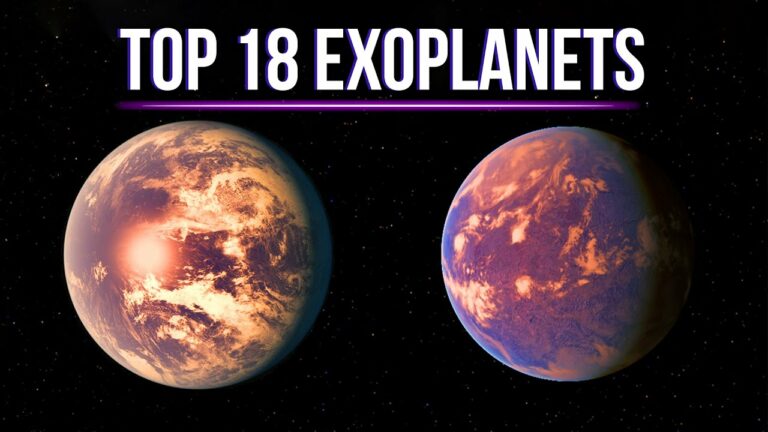These Are The 18 Most Potential New Worlds, Compilation
K2-18b
Let’s start off with recent discoveries, the planet known as K2-18b is a planet that is rising through the ranks as a place where humanity might just be able to live one day. As long as other data about the planet holds up.
TeeGarden B and C
Found just 12.5 light years from Earth around the star known as TeeGarden, two planets have
been noted by scientists to be potential candidates for habitation. Known as TeeGarden B and C,
they have the right size, are within the habitable zone of their star, and more:
Kepler-438B
Located 470 light years away from Earth, Kepler 438B is a long way away, but scientists still love
this planet because it's so similar to Earth in many respects.
Kepler-452B
This planet was discovered in 2015 and upon observing the planet, the people who found it
decided to name it "Super Earth". Kepler-452B is actually 5 times the size of our Earth.
COROT-7b
COROT-7b made a lot of waves when it was discovered back in 2009, mainly because it looked
to be a terrestrial planet that could have a future for humanity.
Gliese-667CC
In our own solar system, Mars is said to be the place that is the likely spot where humanity will
try and colonize first. But, out in space, about 23.6 light years away, there is actually a planet
that looks a lot like Mars. So much so that it's called "Mars' Cousin". This is Gliese-667CC.
Gliese-581G
This planet here has another name, and actually a bit cooler, Zarmina. Oh, and it's
only 20 light years away from Earth. It was discovered in 2010 by Stephen Vogt.
Barnard’s Star b
Found in 2018, and located a mere 6 light years away from Earth (that's really close for the
record), Barnard’s Star b is the 2nd-closest exoplanet to Earth right now.
Venus
Surprised? a reason that Venus is referred to as a sister planet to the
Earth, as its honestly not too far from what Earth is and what a habitable planet could be.
Kepler-22b
Found 600 light years from Earth, Kepler-22b is within the Habitable Zone of its star. As well as
being twice the size of Earth, the yearly rotation is somewhat similar to our own at about 292
days.
KOI 7711.01
In total, there are 4,496 planets that the
The Kepler space telescope has predicted exist, with more than half being confirmed planets.
Of those planets, 30 of them are sized similarly to the Earth and are in the habitable zone
next to their star.
Kepler-186f
Is Another planet that humans could potentially
life on is Kepler-186f
Gliese 832c
Back in 2014, a group of astronomers at the
University of New South Wales predicted the existence of a planet they called a super-Earth.
Ross 128
Last year scientists made an exciting discover
when they located the planet Ross 128b.
Kepler 62-f
Nearly 1200 light-years away in the constellation
of Lyra is the star Kepler-62 and the planet Kepler-62f.
Proxima Centauri’s Proxima b
The closest star to our sun is known as Proxima
Centuri, and it’s only 4.2 light-years, or 25 trillion miles away.
KOI-7923.01
Imagine a planet that’s very similar to the
Earth.
The Trappist Planets (Trappist-1)
Back in 2016, scientists discovered seven
rocky planets in a planetary system, known as the Trappist planets.
Do not forget to share your opinion with us to provide you with the best posts !




0 Comments